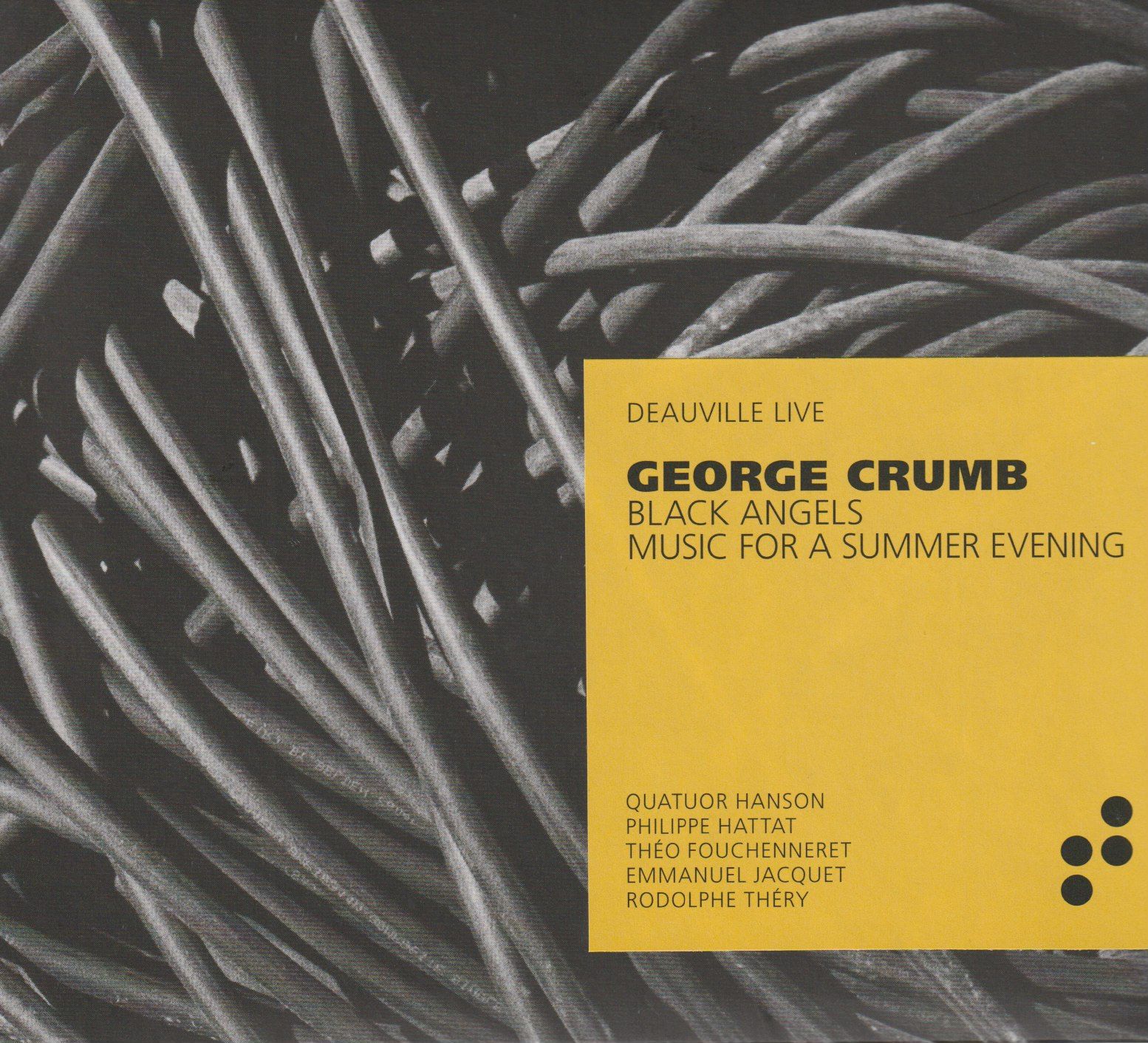Images from the Dark Land: George Crumb's Black Angels & Music for a Summer Evening
Dark music, certainly ... difficult music, definitely ... rewarding music, 100%

"Thirteen Images form the Dark Land": such is the subtitle of George Crumb's most famous piece, Black Angels. 13 movements, split into three segments: "Separture," :Ansence"; "Return". With a title like that, it is no surprise that the work is dated "Friday the 13th" (March, 1970). After the date, Crumb writes In tempore belli - "In time of war" - the Vietnam War.
Scored for electric string instruments, crystal glasses and gongs, Black Angels is a highly individual soundworld. Crumb quotes Schubert (the ‘Death and the Maiden” Quartet) and the Dies irae chant as part of the texture.
The work begins arrestingly with "Threnody I: Night of the Electric Insects". The work is tripartite, depicting a journey of the soul, and many structural points are determined by the ‘spiritual‘ numbers 13 and 7. You can hear the effect of using ‘electric stringed instruments -
Here is a full performance of Black Angels given by the Quotuor Hanson a month before they recorded this disc - the video is from the Festival de la Fondation Singer Polignac:
And, to see what the performers are dealing with, here's a performance by the Quotuor Miró which has a score as you watch:
It's true that surely nobody attacks this music quite like the Kronos Quartet:
As the Hanson Quartet points out in an interview included with the disc, the visual element is important in live performance, especially when it comes to things like the crystal glasses Crumb asks for, or the tom-toms. The Hanson performance has its own way - the opening is arresting but I find the actual soundscape as the piece progresses to be incredibly varied, and rarefied, in this performance:
As the performers say in the interview: "There is no screenplay, but there is a code. The work's entire structiure is mirrored". The music comes back to the silence of its beginning.
The move to Makrokosmos is stark - a kind of post-Bartók Night Music inspired by Bartók's Sonata for Two Pianos and Percussion (the first part is actually called “Nocturnal Sounds”):
Elsewhere, there is frenetic passagework. like a sort of crazy Bartók Sonata for Two Pianos and Percussion. Difficult not to hink of The Clangers though in the sliding whistles of "Wanderer Fantasy" before the music goes to rarefied beauty:
Crumb saw this piece as a ‘cosmic drama‘; that culminates in the superhuman challenges of the final “Myth,” pulsing instruments creating a truly terrifiying Night Picture:
Dark music, certainly ... difficult music, definitely ... rewarding music, 100%.
Crumb Black Angels, Makrokosmos IIICrumb Black Angels (Kronos)